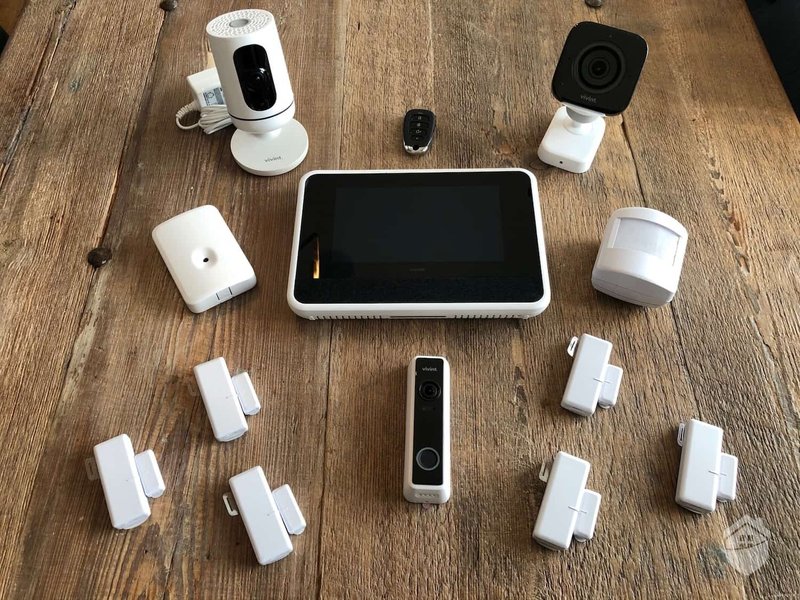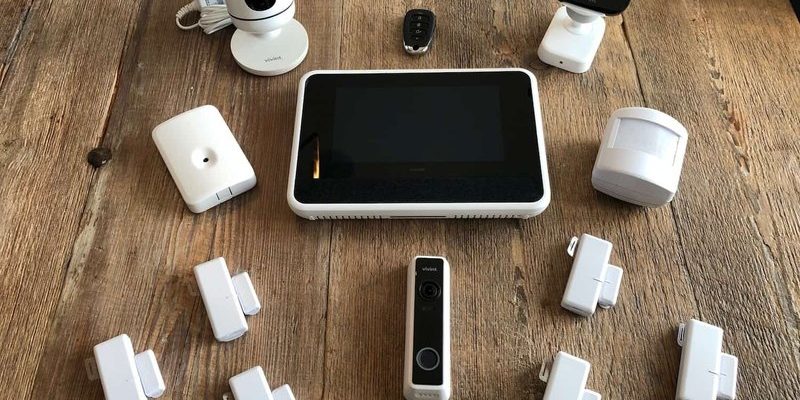
Vivint’s smart remote, designed for seamless control of smart home devices, is supposed to make life easier—not more confusing. It connects everything from thermostats to security cameras, letting you manage your home from the couch. But when the remote misbehaves, even the most tech-comfortable folks start feeling out of their depth. If you’re here, you’re likely wondering if you’re pressing the right buttons or if something’s wrong with the device itself. That’s normal. Even seasoned smart home pros hit a roadblock sometimes.
Let’s look at what usually goes wrong with the Vivint smart remote, and—most importantly—what you can do to fix it. No need to call tech support just yet; a little troubleshooting can go a long way.
Check Vivint Smart Remote Batteries First
Honestly, a dead battery still causes more headaches than any fancy software glitch. You’d be surprised how many times a smart remote “problem” disappears with a fresh set of batteries. The Vivint smart remote usually runs on AAA or AA batteries (check your model to be sure). When the batteries start running low, you might notice sluggishness. Commands won’t always register, or perhaps the tiny indicator light won’t turn on at all.
Here’s the thing: even if the battery indicator says there’s still juice, it may not be enough for high-demand smart functions. Remote signals can get weak or erratic, especially if you’re using rechargeable batteries that have lost some oomph over time. If your Vivint remote feels slow or unresponsive, swap in a fresh pair of batteries and see if the magic comes back.
A quick pro tip: Instead of mixing old and new batteries, always use two of the same brand and type. Odd pairings can mess with voltage and cause weird, hard-to-diagnose problems. And if changing the batteries fixes it, but only for a week or so, you might have a different issue—like a stuck button or internal short—that’s draining power too fast.
Resetting the Vivint Smart Remote Correctly
Sometimes your remote just needs a fresh start—a digital reset, not unlike a deep breath after a long day. If you’re dealing with strange behaviors, like commands not going through or devices not responding, a reset can clear out small glitches in the remote’s code.
To reset most Vivint smart remotes, you’ll want to find the tiny reset button (usually hidden in the battery compartment or on the back). Use a paperclip to press and hold this button for ten seconds. The lights should blink, signaling a successful reset. After this, you may need to re-pair the remote to your Vivint hub or control panel.
Some users worry that a reset will erase all settings. Relax—most remotes only clear network connections, not user profiles or scenes. If you’re asked to pair again, it’s easy: open your Vivint app, find the “add device” option, and follow the step-by-step code or pairing instructions.
If your Vivint remote feels haunted or “possessed,” a reset is like a quick exorcism—chasing away the digital ghosts that slow things down.
Re-Pair and Sync the Remote to Vivint Devices
You might be wondering, “Why does my Vivint remote lose connection so often?” In most homes, wireless signals bounce around like rubber balls, and the remote can sometimes lose its sync with the hub or paired devices. Maybe you’ve changed your Wi-Fi password, added new tech, or just moved the remote too far from the hub.
To re-pair the remote:
- Open your Vivint app on your phone or tablet.
- Go to the devices section. Find your remote and select “remove” or “forget.” (This step clears any old, broken connections.)
- Put the remote in pairing mode by holding down the designated button. The indicator light will start blinking rapidly.
- Follow the on-screen instructions in your Vivint app to add the remote again. You’ll usually enter a pairing code or scan a QR code found on the remote or in the manual.
Pairing problems often come from weak signals—walls, large metal appliances, or even thick furniture can interrupt sync. Try pairing near the hub, then move the remote to where you actually use it. If it loses sync again, you’ll know there’s a dead spot in your home’s wireless coverage.
Understanding Smart Remote Codes and Error Messages
Those blinking lights and cryptic error codes can feel pretty intimidating—like your remote decided to speak another language overnight. Vivint smart remotes use colored LEDs and sometimes on-screen codes to show what’s up. Don’t worry, it’s less mysterious than it looks.
Here are some common indicators:
- Solid green or blue light: Everything’s working; the remote is connected.
- Flashing red or orange: Usually means loss of connection or failed code sync with your Vivint hub.
- No light at all: Batteries are completely drained or the remote is off.
Some remotes give a numeric or alphanumeric code. You can find what these mean in the Vivint support app or manual. More often than not, codes point to temporary problems: network drop, failed sync, or a command the remote doesn’t recognize. If you see a code repeatedly after resets and battery checks, it’s worth calling Vivint support. But nine times out of ten, user error, dead batteries, or a missed pairing step is the culprit.
Fixing Unresponsive Buttons and Physical Issues
Sometimes, the issue is not software or wireless tech—it’s plain old wear and tear. If certain buttons on your Vivint smart remote don’t respond, check first for stuck keys. Dust, gunk, or even a sticky spill can lodge beneath buttons and block the contacts underneath. A tiny bit of compressed air or a gentle swipe with a cotton swab can work wonders.
Let me explain how I handled this a few weeks ago: My “Arm” button stopped working after a night of pizza and movie marathons. Turned out, some grease had worked its way in. A quick clean with a barely damp cloth (unplugged batteries first, please!) and it was as good as new.
If the button is physically damaged—sunk in, missing, or loose—replacement parts are tough to find for branded remotes like Vivint’s. In that case, you may need to call support for a replacement. But if a clean fixes it, you’ll save yourself a phone call…and maybe some embarrassment over pizza fingerprints.
Handling Vivint Remote Connectivity Problems
Smart remotes like Vivint’s rely on a strong wireless connection to do their thing. When the remote stops talking to your hub, cameras, or smart locks, it’s usually a sign of signal trouble. Maybe your router is acting up, or you have too many devices crowding the same frequency. Even microwaves or baby monitors can mess with signals.
Here’s how to quickly double-check your remote’s connection:
- Test Wi-Fi by using another device (like your phone) in the same spot you use the remote. Spotty? Your router may need a reboot.
- Move the remote closer to your Vivint hub or router to see if things improve. Distance can weaken the signal, especially through walls.
- Avoid storing the remote in metal drawers or behind thick shelving. Believe it or not, those can act like signal-blockers.
If you keep losing connection, consider upgrading to a mesh Wi-Fi system, or move your Vivint hub to a more central spot. Sometimes, simply turning everything off and on—hub, router, remote—can clear up interference.
Comparing Vivint Smart Remotes With Universal Remotes
You might be weighing whether you could just grab a universal remote instead. Here’s the deal: Vivint smart remotes speak a special language designed for their own smart home devices. Universal remotes handle lots of TVs and stereos, sure, but they often can’t pair or code with Vivint’s security, cameras, or lights.
There are some “smart” universal remotes on the market, but you’ll need one that supports Zigbee, Z-Wave, or whatever protocol Vivint uses for your setup. Even then, advanced features—like arm/disarm control or custom automation—may be locked out.
If your Vivint remote is truly dead, or support can’t help, it’s sometimes worth trying a compatible smart universal remote as a backup. But for full access to Vivint code and sync features, their branded remote is still the smoothest ride.
When to Contact Vivint Support for Remote Troubleshooting
Alright, let’s be real—sometimes even the best troubleshooting hits a wall. If you’ve reset, paired, cleaned, checked batteries, and still get nothing? That’s when it’s time to call in the experts. Vivint’s support team can walk you through deeper troubleshooting, check warranty status, or send a replacement if needed.
Before you call, jot down:
- The exact model of your remote
- What you’ve tried already (trust me, this saves time)
- Any error codes or patterns you’ve seen (colors, flashes, numbers)
Support will often ask for these details. Having them handy means less time explaining, more time fixing. And, if your remote is out of warranty, they’ll offer alternatives or tips for compatible devices.
Tech can be cranky, but you don’t have to face it solo—sometimes asking for help is the smart move.
A Vivint smart remote is like the conductor of your smart home orchestra: when it works, everything is beautifully in sync. Most problems—battery hiccups, lost sync, simple code errors—have quick fixes you can do yourself. By taking each troubleshooting step slowly and carefully, you’ll save yourself frustration (and maybe a support call).
Remember, a little patience and a willingness to press a few extra buttons can go a long way in solving even the trickiest remote glitches. And if all else fails, reaching out to Vivint support isn’t a defeat—it’s just the last step in making your smart home feel a little more like home.
